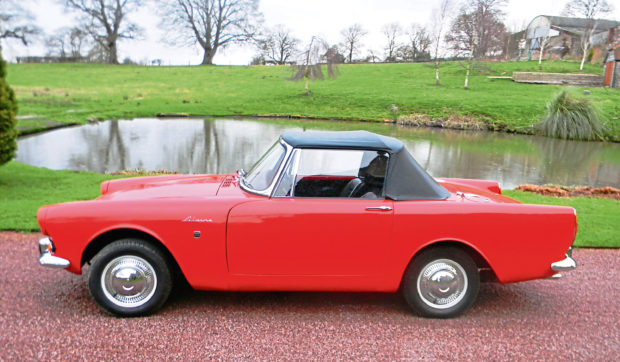For decades the Rootes Group had four marques in its portfolio—Humber, Hillman, Singer and Sunbeam—but all gradually disappeared once Chrysler acquired Rootes in the mid-1960s.
Humber cars were big, posh—and first to be shelved by Chrysler. Already from 1957 onwards, the other three marques shared floorpans and much else but had different grilles. Hillmans were the bedrock, Singers were more upmarket and Sunbeams had a sporty cachet. Badge engineering also applied to the Linwood-produced Hillman Imp—in the nattier Singer Chamois and slope-backed Sunbeam Stiletto.
The one model that stood apart was the two-seater Sunbeam Alpine and its big-engined Tiger sibling, both popular in their day. On the other hand, the hardtop Rapier was largely a two-door Hillman Minx with twin carbs and other sporty tweaks.
Sunbeam was started by John Marston, making bicycles in 1888 in a Wolverhampton suburb. It made its first car in 1901 and first motorcycle, in a separate division, in 1912. Sunbeam produced nearly 650 first world war aero engines and in the 1920s resumed car making and, borrowing heavily, moved into motorsport and land speed record attempts.
However, Sunbeam was brought low in 1934 by the great depression and failed to repay 10-year loans that financed its 1920s motorsport efforts. Car production ceased but trolleybus manufacture continued. The receiver sold the car division to Rootes, which in 1938 combined it with their Talbot brand to create Sunbeam Talbot, the name surviving until 1954.
Sunbeam Talbot’s most successful post-war models were the mid-sized 80 and 90, identical four-door saloons with 47bhp and 64bhp engines, a classic chrome grille with then-modern styling which included near-concealed rear wheels and back-hinged rear door. They sold well into the 1950s until Rootes combined Sunbeams with Hillmans and Singers on one platform. The later Chrysler years saw two pokey hatchbacks launched, the Talbot Sunbeam and just Sunbeam, now forgotten.
Sunbeam motorcycles passed to Nobel Industries (later ICI) in the 1920s, then in 1937 to Associated Motor Cycles (which owned Matchless and AJS and later bought Norton) and to BSA in 1943. Their futuristic post-war Sunbeam 7 had balloon tyres and drive-shaft transmission when other bikes still had Morse chains. Motorbike manufacture stopped in 1956, although scooters were made until the mid-1960s. Today, Sunbeam bikes and cars have a loyal following and are crowd-pullers at classic vehicle rallies.
